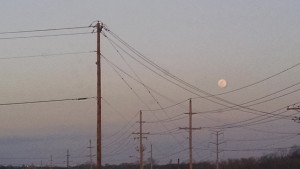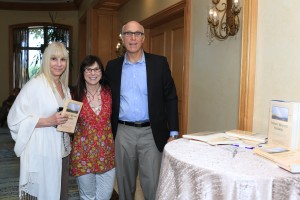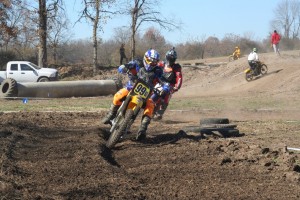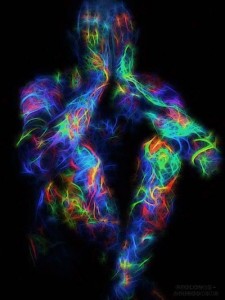
Tag Archives: hope
- “Outstanding speaker!”
- “Very appropriate, important topic and the speaker was engaging.” Sarah J.
- “Enjoyed awesomely.” Modenia Black-Drake
- “Presenter had good rapport with the audience and created good interaction.”
- “Top notch!!” Mike Boyd
- “Liked that I was forced to go deep.” Patty Valentini
- “Feel like this is the first person who understands how I feel. Everyone should have this session.” Cindy Carter
- “Reality was presented-life as a whole.”
- “Surprising and interesting.”
- “I learned something about the biology of hope.”
- “Excellent presentation which promoted a deeper understanding of subject.” Cindy Ralston
- “Very good; Interaction.”
- “Compassion fatigue spelled out for me.” Hugh Schaffer
- “I would be interested to have you share info re: Compassion fatigue with my nurses, if I can find funding and approval.”
- “Very helpful.” Darlene Jerose
- “Necessary topic for SG leaders of incurable disease. Gained some tools for coping. Thanks.” Gail G. McCray
- “An energetic presentation by an energetic presenter.” Godfrey Taylor
- “I have a greater understanding of hope.”
- “Very enthusiastic about his field. Well communicated.”
Spring is a good time to remember that each of us was born with the right to be powerful and loving. Spring shows us the powerful fullness of life always waiting beneath. Many seeking counseling learned that being loving was OK, but being powerful wasn’t. Consequently, their power may be hidden beneath.
There’s an interesting notion developed by the Pfieffers, a counseling couple out of Chicago: The Misimprint Theory. The theory suggests that whatever dysfunction we grew up around, we seek in adult relationships.
According to the Misimprint Theory, the mind of a child growing up in chaos, or abuse, neglect, rejection or any other form of dysfunction is misimprinted with the belief that it is only in such dysfunction that love will be found.
When to laugh, when to just say no, 
When to keep, when to let it go,
When to hope, when to let it die,
When to sleep,when to dry your eye,
When to climb, when to settle down,
When to play, when to dance around,
When to see, when to close your eyes,
When to be in darkness, when to soar, to fly
Chorus:
I don’t know the answers to these questions
But I know that if I open up my heart,
It will be
I don’t know the answers to these questions
But I know that if I open up my heart,
It will be
Hope is like cornering: lean in a little and let go. Otherwise you interfere with the flow of things.
Racing has taught me a lot. If you train your eyes on some nasty cross-rut or rock in your line, that’s exactly where your body takes you and the bike. Next thing you know, you’re down and picking up parts.
But if you focus instead on where you want to go, your body takes you and the bike there. Somebody once told me about a guy on a motorcycle at a crossroads in the Branson area. The biker decided to shoot between oncoming vehicles. Unfortunately, traffic was too fast and a car clipped the motorcyclist.
Here’s the telling piece. When you looked at skid marks left by the car, the dark lines curved right into the biker! The car driver did exactly what most of us would have done: set his eyes on the darting motorcycle. But, had the driver of the car looked instead at where he wanted to go (straight ahead) he would likely have missed the biker. Where we focus is where we go.
Biking has also taught me about hope, and it’s a lot like cornering. To corner, it’s best to simply shift your weight into the corner and then let nature takes its course. Relatively effortless, actually. But it’s easy to overthink and oversteer. The result: you get off course.
Life’s like that. Hope seems to serve us best when we gently point our hearts in the direction of what we want, and then let go. After that initial setting of direction, if we overthink it, or focus too much on getting what we originally hoped for, our actions get skewed and the natural course of things can no longer flow.
In this way, hope seems to engender a little trust.
Epigenetics is a relatively new study linking our psychological environment to molecular activity that may actually change the DNA we were born with. The INNERnet is that crisscross of chemistry and electronics in our bodies that is highly responsive to our thoughts, feelings and beliefs.
Early research in epigenetics uncovered that loving behavior by mouse moms actually altered not only the behavior of their babies, but their babies’ DNA!
Epigenetics later showed the psychological makeup of parents and grandparents can change the psychological makeup of offspring. What’s groundbreaking about epigenetics is that it also showed the psychological makeup of parents and grandparents can change offspring DNA. The genetic change happens at the molecular level when the methyl groups attach themselves to DNA. This attachment acts like a switch to turn certain DNA on. And when a particular DNA is switched on that person may be more prone, for example, to alcoholism or depression.
Consider a child with no genetic predisposition for depression born into a happy home. So far, so good. However, if one of that child’s parents becomes an angry person, that child may become sad. OK. Makes sense. But here’s the remarkable thing about psychological environments uncovered by epigenetics. If that parent’s anger persists, that child’s DNA may change in a way that supports depression.
That’s not all. More recent studies in epigenetics suggest that we, as individuals, can change our own DNA by our thoughts, feelings and beliefs!
This is where the idea of the INNERnet comes into play. I would define the INNERnet as the intricate web of neuropaths, cells and hormones in each of us that regulates how we feel, which can be biologically altered by our beliefs, thoughts and emotions.
Just like the Internet, the INNERnet contains an incalculable amount of data. And like the Internet, the data contained in our INNERnet can make us feel better or worse.
As we become more and more aware of ourselves, we recognize that the quality of our day to day lives is a product of what neuropaths we choose to fire. A wise woman, Paula Geiss, BSN, MSN, BBHS, once told me, “It’s all about how we run our energy.” If this sounds like electrical engineering, it is. We are an electrical system. If I flop on the floor because my heart has stopped beating, medics use electrical charges to bring me back. It’s this same electrical system that gets employed when persistent thoughts and feelings strengthen or weaken certain neuropaths.
Love this quote from Lin Yutang: “Hope is like a path on the hillside. Once there was no path, but as villagers traveled that place, a way appeared.” Those beautiful words were written well before our current understanding of neuropaths and neuroreceptors. And yet they perfectly describe what happens in the brain and on the surface of the cells, as we open ourselves more and more to hope, or any emotion. Here’s how it works.
The more we feel any emotion, the more the brain responds by strengthening the “path” (called a neuropath) supporting that particular feeling. Since there’s limited space in the brain, the more we feel one emotion and the more space is taken up in the brain by the neuropath supporting that emotion, the less space there is for neuropaths supporting other emotions. And usually our feelings result from our thoughts.
If we run our energy through the neuropath of, “I am enough,” certain hormones are released in our bodies that impact us at the cellular level. And epigenetics is telling us that if we run that kind of energy long enough, we might actually change ourselves at the level of DNA.
Of course, if we run our energy through the neuropath of, “I am not enough,” the same electrical and biochemical process ensues.
Once changed at the DNA level, the system now is predisposed to run that kind of energy. Either way, how we feel, moment to moment, will be impacted by the kind of energy we are running. And how do you want to feel? Better, right?
From Gandhi to gangster, aren’t all of us motivated to feel better? Did Gandhi’s altruism bring him a sense of inner well-being? Does the gangster do what he does to feel valued? And what if this isn’t selfish, but the way of life? And what if, in feeling better, we heal something in ourselves. And what if, in healing something in ourselves, we fear less and love more? And what if, in loving more, more of us heal?
By paying attention to our INNERnet, we can not only feel better. We can potentially change our bodies at the level of DNA in a way that increases our chances of sustaining that better feeling.
As a simple guide to “running good energy” and potentially shifting our DNA to a more supportive place, it’s not a bad idea to regularly check in with ourselves, and ask, “Is what I’m thinking right now making me feel better or worse?”; “Is what I’m feeling right now life-giving or life-taking?”
With practice, we can consciously choose thoughts and feelings that expand ourselves and others, rather than contract. If we stay the course, perhaps we can alter the DNA of our species.
“Hope is like a path on the hillside. Once there was no path, but as villagers traveled that place, a way appeared.” Those beautiful words by Lin Yutang were written well before our current understanding of neuropaths and neuroreceptors. And yet they perfectly describe what happens in the brain and on the surface of the cells, as we open ourselves more and more to hope, or any emotion. Here’s how it works.
Endorsed by two New York Times bestselling authors.”




